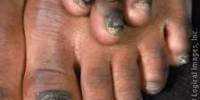Influenza viruses, commonly known as the flu, are a group of viruses that cause respiratory infections in humans, birds, and some other animals. Influenza viruses are becoming increasingly resilient to medicines. New active substances are required as a result. Researchers at the University of Münster have made significant discoveries in this regard: for the virus to multiply, the influenza Through the use of host cell enzymes, a virus must go through numerous modifications.
The study team was able to create a thorough map of different sorts of change. Drugs that target the enzymes would be resistant to the virus’s fast changes, providing significant potential for the future.
Every year, the influenza season presents a challenge to hospitals. Despite having received the vaccine, elderly adults and individuals with health issues are more at risk of contracting a severe case of influenza.
The capacity of influenza viruses to rapidly evolve, making them more resistant to treatments, makes them particularly nefarious. In order to continue treating the sickness effectively in the future, it is urgently necessary to develop new active components.
Researchers at the University of Münster have taken an important step in this direction which is described in a study published in the latest issue of the journal “Nature Communications.” The research was able to show that the influenza A virus’ polymerase, or the key enzyme in charge of producing copies of the virus genome, had undergone 59 distinct alterations.
On the basis of our mapping of the ubiquitination, further studies can now research into which enzymes are specifically responsible for the modification of the IAV polymerase. Medicines which are directed against these enzymes would be resistent to mutations in influenza viruses, thus displaying great potential for future treatments.
Dr. Franziska Günl
The alterations disclosed in the study are unique in that they are passed down by proteins in the host cells and, unlike virus proteins, cannot mutate quickly. They consequently provide a method that has promise for the development of novel medications.
The influenza A virus polymerase (IAV polymerase) is a highly complex protein which has more than just one function. One of these is that after a structural change it can also make copies of the virus genome (cRNA and vRNA). Without this “switch” of functions, the virus is not able to proliferate.
As Dr. Linda Brunotte and Dr. Franziska Günl and a team of colleagues now discovered, the IAV polymerase needs proteins from the host cell to act as “molecular switches” and carry out its diverse functions. These proteins are enzymes that attach so-called ubiquitin proteins to particular locations in the polymerase, signaling the switch in activities.
“We were able to produce a map showing 59 positions on the viral polymerase to which ubiquitin was attached through the host cell. These are completely new findings which reveal the Achilles’ heel of the influenza A virus,” explains Dr. Brunotte, who heads a team of researchers at the Institute of Molecular Virology and also initiated the study.
This ubquitination definitely affected the polymerase’s activity at 17 different locations. Additionally, a particular location was identified whose alteration serves as the signal for the conversion and the related transition in the polymerase’s operations.
As a result, Dr. Günl, the lead author of the study, is now looking ahead: “On the basis of our mapping of the ubiquitination, further studies can now research into which enzymes are specifically responsible for the modification of the IAV polymerase. Medicines which are directed against these enzymes would be resistent to mutations in influenza viruses, thus displaying great potential for future treatments.”
The study produced by Dr. Brunotte and Dr. Günl received 266,000 euros in funding from the German Research Foundation. The International Day of Women in Science fell on the day when the two successful researchers released their findings, which was appropriate.
















